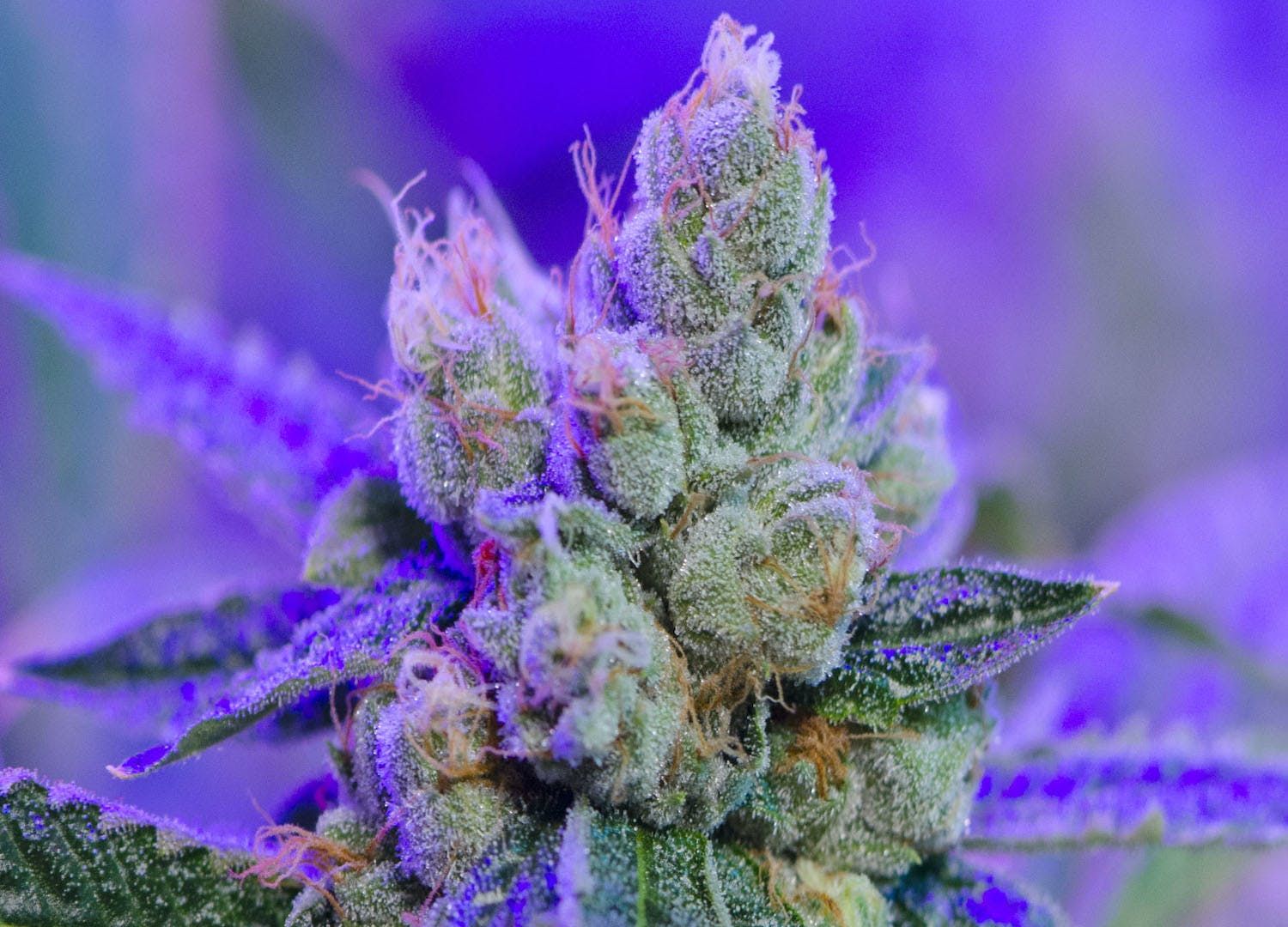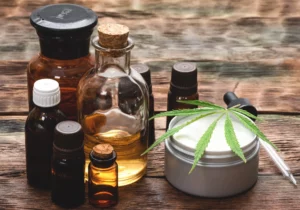In its natural state, the marijuana plant contains over 480 known natural chemicals. Some of those are cannabinoids, the active compounds responsible for marijuana’s medicinal and recreational effects. Cannabis sativa also contains 120 known terpenes—the oils that give many kinds of plants their distinctive fragrances.
Both kinds of compounds produce a variety of beneficial effects on their own, but studies suggest—and cannabis consumers confirm—that when cannabinoids and terpenes work together, these effects are more potent. This synergy has been called the “entourage effect”—and it can explain why “whole plant medicine” is more effective in treating many health conditions than either terpenes or cannabinoids alone.
Cannabinoids: What Exactly Do They Do?
Cannabis is an intricate plant, rich in a variety of different cannabinoid compounds that bind to the body’s natural cannabinoid receptors. These receptors are found throughout the body in a network called the endocannabinoid system (ECS). And they’re triggered not only by the natural cannabinoid chemicals produced by the body, but also by ones from external sources, such as cannabis.
Because cannabinoids from cannabis bind to endocannabinoid receptors, they can affect neurotransmitters in the brain that are responsible for mood, memory, cognition and more. That’s why psychoactive tetrahydrocannabinol (THC) can produce euphoria and reduce anxiety. Meanwhile, non-psychoactive cannabidiol (CBD) can trigger immune responses and reduce inflammation throughout the body.
But THC and CBD are only the best-known and most thoroughly studied of marijuana’s many compounds. Others include:
There are many lesser compounds that turn up in varying amounts in different cannabis strains and whose individual effects aren’t clearly known.
Terpenes: Important Oils With Therapeutic Benefits
Terpenes are produced by the resin glands of many plants, not just cannabis—and they’re even found in a few insects. These oily substances are responsible for the distinctive smells and tastes that characterize different plants and trees.
Take limonene, a terpene that adds a lemony scent not only to lemons themselves but also to other fruits, some spices, and a variety of cleaning products as well as some strains of cannabis.
And then there’s pinene, a very common terpene that accounts for the smell of pine trees and a variety of spices as well as industrial and cleaning products.
Some marijuana strains contain limonene and pinene, too. Each cannabis strain has a long list of other terpenes that are both major (showing up frequently and in relatively large quantities in many cannabis strains) and minor (less common terpenes whose value isn’t precisely known).
Many terpenes are even considered food grade, and the U.S. Food and Drug Administration has designated them as generally safe for consumption. But studies on the properties of terpenes reveal that some have healing benefits, too.
Like cannabinoids, terpenes can bind with endocannabinoid receptors in the brain and body, and they can also act directly on tissues and cells in the immune system.
For example, pinene can damp down responses in the body’s pain receptors, so that it reduces pain and discomfort from disorders such as fibromyalgia and arthritis. As for limonene, it’s been shown to reduce anxiety, fight fungal infections and improve respiratory function.
Terpenes can also work with each other. Some studies suggest that limonene and pinene can work together to combat viral infections. Meanwhile, a form of pinene called beta-pinene appears to boost the production of myrcene, another terpene that reduces resistance in the blood brain barrier.
Cannabinoids & Terpenes: A Complex Partnership
Both the cannabinoids THC and CBD are available in isolated forms, and so are terpenes. You can buy isolated terpene extracts to add to foods. You could even add them to cannabis and marijuana products.
But research over the past few decades seems to suggest that consumers feel the maximum effect of cannabinoids and terpenes when they’re consumed together in their natural state. This synergy among various combinations of terpenes and cannabinoids is the reason why many medicinal cannabis experts advocate for whole plant medicine, rather than taking specific compounds in isolation.
Is the Entourage Effect Real?
In the 1980s, scientists created a drug called Marinol, a synthetic form of THC designed to boost the appetite of people undergoing chemotherapy treatments. But although Marinol has been widely available by prescription since then, many people seeking its benefits have turned instead to cannabis itself. Patients say that they feel better and get better results from consuming some form of the whole plant.
After Marinol, researchers came out with an oromucosal spray called Sativex, another synthesized cannabis product intended to ease the muscle spasms that come with multiple sclerosis. Sativex is a combination of THC and CBD, but it lacks all of the other compounds found in the whole cannabis plant. And, again, a number of patients say they prefer to consume the whole plant instead of taking these compounds in isolation.
All of this seems to suggest that the power of the entourage effect is real. But because of restrictions on cannabis research, studies on this effect have been limited. But cannabis consumers attest to the benefits of taking cannabis in its natural form over synthetic extracts, and some of the relatively little research on the entourage effect seems able to support their claims.
Still, some research finds little evidence for the entourage effect. These studies usually point to the need for more extensive studies to determine which combinations of cannabis compounds and cannabis-terpene combinations might produce specific effects. This, say some researchers, could open doors to a new era of designer cannabis products, with specific cannabis-terpene mixtures that could be fine-tuned to suit individual needs.
Whole Plant Cannabis Medicine Has It All
Isolated cannabis compounds appear in a variety of products, and these have their own benefits. For example, CBD-only formulations can have a wide range of beneficial effects for a long list of health conditions and don’t produce psychoactive effects.
And for anyone interested in consuming a specific terpene, they can buy that terpene extract and add it to cannabis products or food to get a specific effect.
But because the complex interactions among the hundreds of cannabinoids and terpenes in cannabis still aren’t thoroughly understood, cannabis advocates recommend consuming cannabis in its whole, natural state whenever possible to get the full benefit of its many healthful effects.
If you’re new to cannabis and want to learn more, take a look at our Cannabis 101 index of articles. HelloMD can help you get your medical marijuana recommendation; it’s 100% online, private and efficient.






